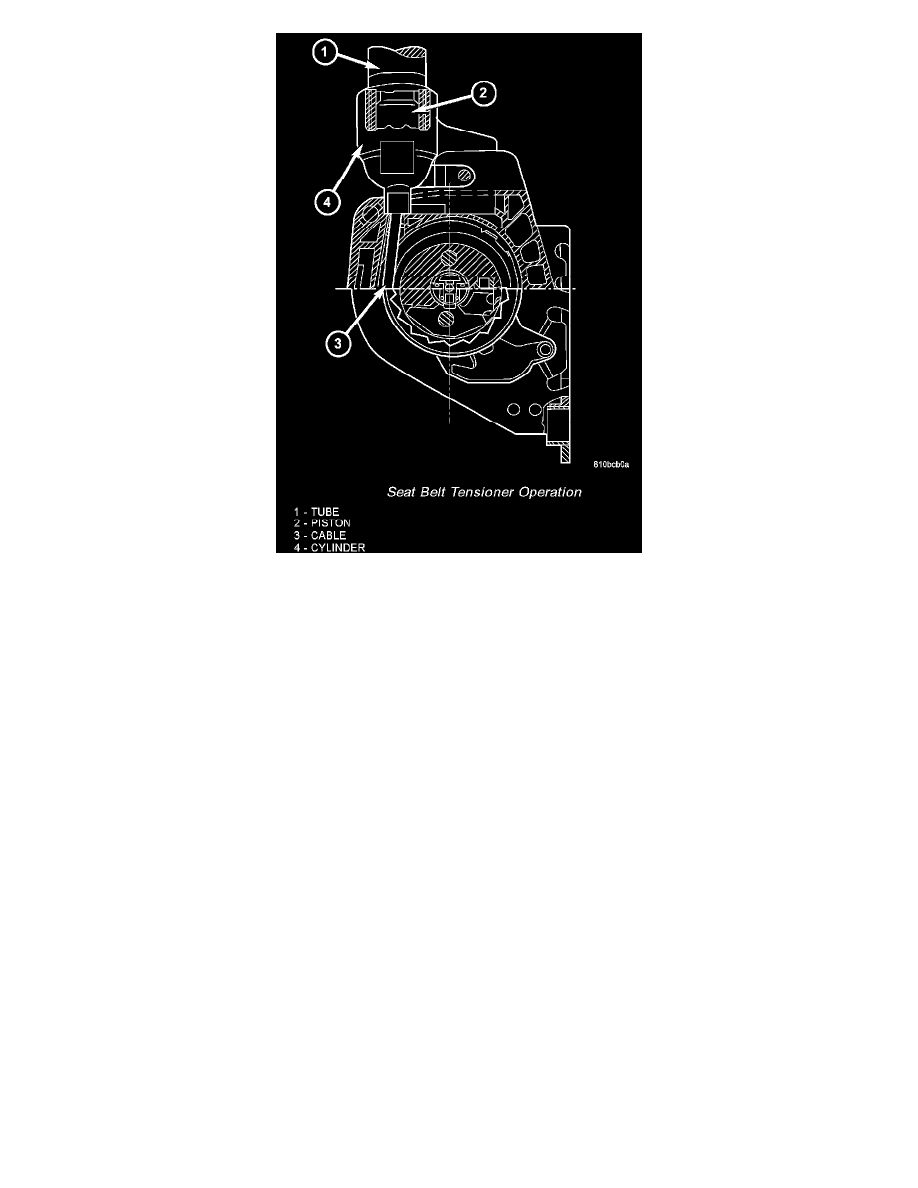Sprinter 3500 L5-2.7L DSL Turbo (2004)

Seat Belt Tensioner Operation
The seat belt tensioners are deployed in conjunction with the airbags by a signal generated by the Airbag Control Module (ACM) through the driver and
passenger seat belt tensioner line 1 and line 2 (or squib) circuits. When the ACM sends the proper electrical signal to the tensioners, the electrical energy
generates enough heat to initiate a small pyrotechnic gas generator. The gas generator is installed so that it directs its expelled gas at the underside of the
piston in the cylinder. The piston is connected to a cable that is wound around a pulley on one end of the retractor spool. As the gas expands, it propels
the piston through the tube, which pulls the cable and rotates the retractor spool to take up slack in the seat belt webbing.
Once a seat belt tensioning sequence has been completed, the forward momentum of the occupant results in deformation of the torsion bar. Removing
excess slack from the front seat belts not only keeps the occupants properly positioned for an airbag deployment following a frontal impact of the
vehicle, but also helps to reduce injuries that the occupant might otherwise experience in a frontal impact event as a result of harmful contact with the
steering wheel, steering column, instrument panel and/or windshield. The torsion bar is designed to deform in order to control the loads being applied to
the occupant by the seat belt during a frontal impact, further reducing the potential for occupant injuries.
The ACM monitors the condition of the seat belt tensioners through circuit resistance. The ACM will illuminate the airbag indicator in the Electro
Mechanical Instrument Cluster (EMIC) and store a Diagnostic Trouble Code (DTC) for any fault that is detected. For proper diagnosis of the seat belt
tensioners, a DRBIII(R) scan tool is required. Refer to the appropriate diagnostic information.
